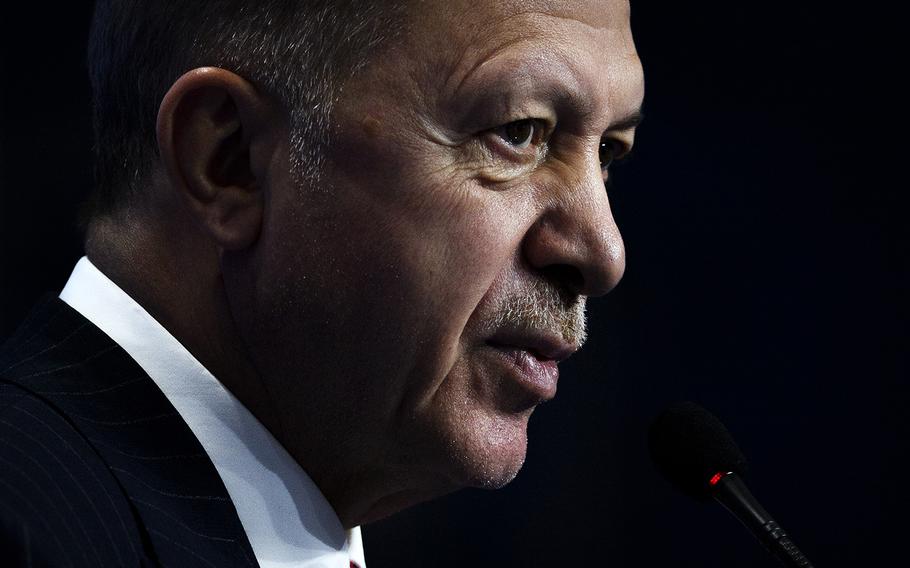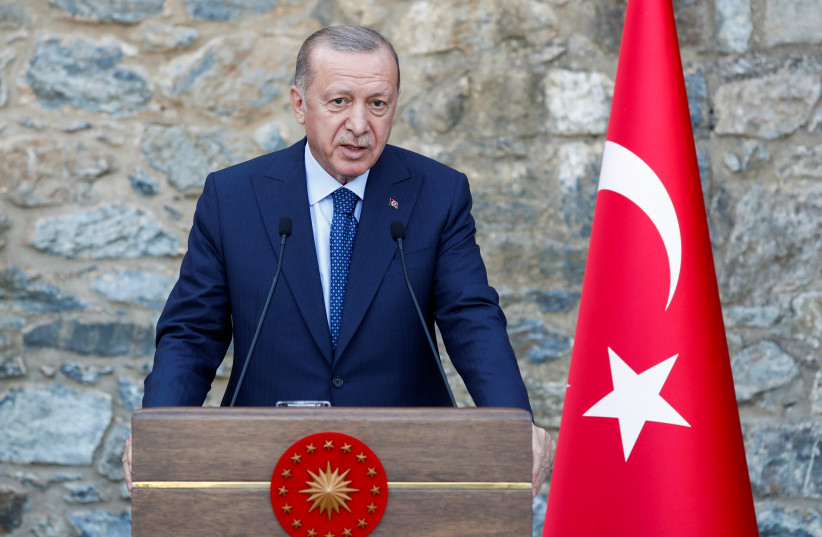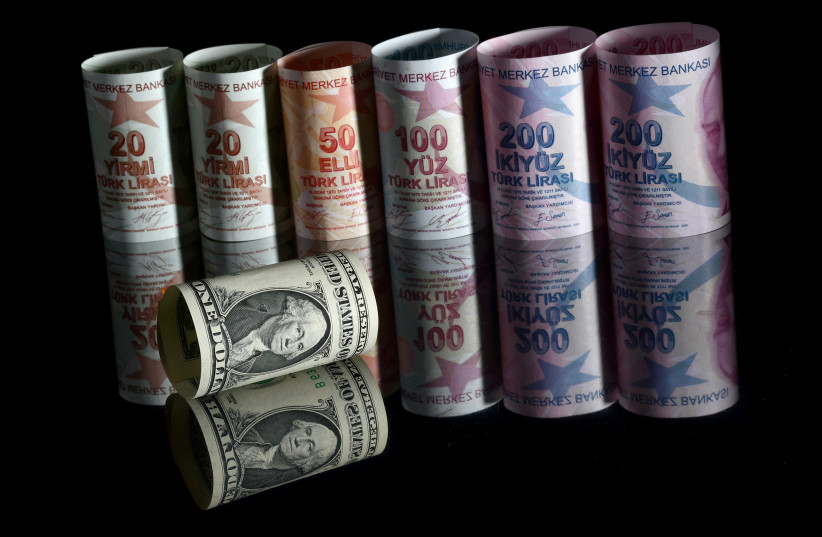Toss a coin to the physicist who agreed to this interview
By Maddie Stone Dec 17, 2021
Those who plan on watching the second season of Netflix’s The Witcher can look forward to plenty of epic monster battles, character development, and Henry Cavill staring broodingly into the middle distance. But season 2 also reveals a lot about the broader world that The Witcher takes place in — or more accurately, the many worlds.
Specifically, this darker and more serious chapter in the epic fantasy saga zooms in on a seminal event in the Witcher lore known as the conjunction of the spheres. During the conjunction, which took place approximately 1,500 years before the events of the show, a bunch of different spheres of reality collided with one another, causing elves, dwarves, humans, and monsters to all get mixed up together on the same continent, much to their mutual discontent.
While this cosmic collision is pure fantasy, there is a potentially scientific idea at its core: some physicists have proposed that our universe may really be just one in a much grander multiverse of realities. If that’s true, it may even be possible for different universes to interact to some extent. These ideas are wildly controversial, with one camp of physicists arguing that the multiverse is more a matter of philosophy or religion than a fruitful terrain for scientific inquiry. Others say that since we can’t rule out the existence of a multiverse, there’s no harm in speculating about its nature.
With season 2 of The Witcher dropping on Netflix today, it felt like an apt time for some rampant speculation. To keep things as scientifically grounded as possible, The Verge chatted with University of California, San Diego cosmologist Brian Keating about some of the most mind-bending multiverse ideas physicists have proposed, where pop culture stretches these ideas beyond recognition, and the cosmic horizons we may never see past.
This conversation has been edited for length and clarity.
The Witcher is not alone in popularizing the idea of the multiverse. It’s a big theme in the Marvel cinematic universe now, it’s in Star Trek. Some physicists would say the multiverse is nothing but science fiction. But could you tell us a bit about why others think it might really exist?
Yeah. So the multiverse is kind of a natural extrapolation of what we call the Copernican principle, which is that where we are and who we are and what we are shouldn’t be significant or aberrant. It should be kind of representative of the properties throughout all of reality. And just as there’s many planets, there are many stars, there are many galaxies, and there are many clusters of galaxies, so, too, the logic would have one believe there is no reason to suspect that there should be only one universe. In fact, one of the foremost proponents of the multiverse paradigm, Andrei Linde, who’s a professor at Stanford, claims that we shouldn’t be biased in favor of a universe. That we should, in fact, start from this [idea] that there probably is a multiverse. And the notion has been extended by other people to really encompass all the different types of possibilities for the existence of more than one universe: A universe that is characterized by laws of physics, constants of nature, intelligent or conscious beings, and so forth.
The multiverse comes as directly as a consequence of two very different branches of physics. One is cosmology, in particular what’s called inflation, the theory of the ultra-high energy origin of the expansion of space and time that would later become our observable universe. And also from string theory, which predicts sort of a landscape of possible values for different fundamental constants and forces. So these two different fields, which aren’t really associated with one another, both imply that there is the possibility for a multiverse. And as yet, there is a vast disagreement as to whether or not the multiverse actually is part of physics, or if it’s pure philosophy. And if it’s part of physics, how could one go about testing it or even falsifying its existence?
So to be clear, we have no direct evidence for the existence of a multiverse.
So the question is whether or not it’s even in principle possible to provide evidence that supports a multiverse. And if such evidence can’t be found, is it possible to rule out the existence of the multiverse? Because you might be living in a multiverse, but then you might not be able to detect that you’re living in a multiverse the same way that bacteria in a petri dish can’t detect that they live inside of a laboratory inside of a building inside of a planet. It’s too remote from the sphere of reality that they have access to.
Now, there are people who propose there are ways to measure the possibility that we are in a multiverse. The one particular signature would be looking for an impact, or a collision with another universe, that would produce an observational pattern in the oldest light in the universe called the cosmic microwave background radiation, which is what I study. And that theory, or conjecture, is pretty wildly contested. It’s not at all clear if you could categorically detect and therefore motivate the existence of the multiverse.
But there’s no doubt in any physicists’ minds that there are regions of our universe which are unobservable to us. And in that sense, you know, we already believe in a sort of multiverse. But then, extending and adding new features onto that multiverse, from inflation or from string theory, that’s where things get very controversial.
As I said a moment ago, we’ve seen a lot of depictions of the idea of the multiverse in pop culture. I think what makes The Witcher stand out a little bit is it’s not just positing there are all these different universes out there in their own separate bubbles, but that universes have collided with each other. There’s a historical, cataclysmic collision that sort of sets the stage for the events of the series. In the context of a multiverse, do physicists have any ideas as to whether, or how, different universes might interact?
First of all, physicists aren’t in agreement that the multiverse is a serious scientific paradigm worthy of discussion. A lot of people believe it’s not. On the other hand, if you do take it seriously, then you can ask questions about it. But then it’s not clear whether or not there’s any evidence, or set of evidence, that could prove it wrong. Because you could say, well, we thought this was evidence for the multiverse. But actually, in the multiverse, since anything is possible to happen, you can get any range of predictions that you want. And so it’s kind of unsatisfying. It’s like eating cosmic Wonder Bread.
In the context where these universes collide, it could be just as light travels at a finite speed, the Sun could disappear right now, and we wouldn’t see it for eight minutes. So it’s not possible to say something is ruled out just by not seeing it.
So there could be a multiverse. It could be one light-year away from us, in a certain sense, in which case next year we’ll see it. It could be 10^50 light-years away from us, in which case we’ll never see it. So it could turn out, yes, tomorrow we impact a universe that’s one light-year away from us. But the thing I would gently push back on is that the notion of a collision nucleating some vast explosion is not at all clear.
For example, we know for sure we will eventually collide with the Andromeda galaxy, which is our nearest neighbor galaxy. It’s almost like a twin sister of ours, and it has almost the same number of stars, hundreds of billions of stars. It’s even more massive than ours, and it’s one of the few galaxies we’re moving towards rather than expanding away from, according to Hubble. That galaxy will someday crash into our galaxy, but it’s not like every single point will collide and each star will hit another star. In fact, they’ll mostly pass right through each other. So if a galaxy, which is billions of times more dense than the universe on average, can pass right through another galaxy, all the more so a universe could pass through another universe in a certain sense.
So I think it’s artistic license to suggest that that could nucleate some fireworks. But I admit it’s pretty cute.
Could there be any sorts of interactions between different universes?
Yeah, in fact, one of the ways you might see the impact of a universe adjacent to ours is that it might have a gravitational force that deflects the light traveling in our universe. But all of this would be taking place at the boundary of what we can see just today. In other words, it wouldn’t be happening to us. It would be happening 45 billion light-years away from us and we would just be seeing it now [Editor’s note: 45 billion light years is the approximate radius of the observable universe]. Unless you’re talking about some interdimensional wormhole between different universes, and that’s incredibly speculative.
And some of the problems with these physical phenomena when applied to science fiction, like wormholes and other things, is that they’re barely at the level of speculation. They’re completely removed from testability in laboratory settings. They’re mathematical possibilities. But as I always say, mathematics allows the possibility for infinity. You know, just divide one by zero. But there is nothing that we know about in the universe that’s infinite. Nothing that has infinite temperature, density, pressure, energy, etc. So just because something is mathematically possible doesn’t mean it has any physical relevance. So I don’t want to be a downer. But the reality is, yes, it is possible to witness the effects of another universe interacting with ours. But it would be occurring not here, but a very, very distant there.
So it sounds like a physically plausible story about the multiverse would not have a lot of cool stuff to look at.
Well, yeah, it’s like saying, you know, a black hole or a wormhole as is possible. Of course, we measure black holes, but we don’t measure any near us, right? There’s not one that we can kind of play with and jump into and then pop out, you know, in the Andromeda galaxy, even, let alone in another universe.
And by the way, if the laws of physics change from universe to universe, it’s not at all clear that the laws of mathematics, or the laws of logic, would be forbidden from changing. In other words, you get into a wormhole in our universe. You pop out in another universe. Well, the laws of wormholes are based on the laws of black holes, which are the consequence of general relativity, which is a consequence of partial differential equations, which is a consequence of calculus, which is a consequence of real numbers. And who knows if there’s such a thing as real numbers in another universe? Just as the old joke goes, an old fish swims by two young fish and says to them, “How’s the water?” And they say, “What’s water?” They have no concept of it. It’s so alien to their existence that they can’t even contemplate it. And there’s no reason to be chauvinistic, to think it would be like our universe.
I feel like we see that idea represented at least a little bit allegorically in science fiction — and this true in The Witcher as well — in how when beings move from universe to universe, they often can’t survive in the other universe for an extended period of time because it’s fundamentally so different.
In my first book Losing the Nobel Prize, I made this kind of analogy which I called the petriverse. So imagine there’s some bacterium and it’s in a petri dish and it starts making a colony. That bacterium, if it was very smart, could realize that there’s a possibility for another colony really far away from it to exist because it has the agar gel and it has gravity and sunlight and whatever. It could deduce that there is a possibility for another universe in the petriverse, and actually some of these other colonies when they do form, even though they are only a couple of centimeters away, they produce toxins that prevent other bacteria from invading their space. So it’s like, a barrier that makes it inhospitable and hostile to the existence of hopping between universes, just like what you described.
What sorts of advances in physics could we make in the coming decades that might shed light on this question of whether the multiverse is real?
I think the field that I’m studying, which is the cosmic microwave background, the key observable, and what we’re trying to discover, is unequivocal evidence that inflation took place. And if inflation took place, that would come concomitantly with the multiverse in most physicists’ anticipation. They go as a direct consequence. If you discover these waves of gravity embedded in the cosmic microwave background, then you would get a very strong piece of evidence that would seem to mandate the multiverse exists. [Editor’s note: Keating later clarified that this would be ‘perhaps the strongest circumstantial evidence possible’ for a multiverse.] On the other hand, it may be that inflation took place, but it’s too weak to produce observable gravitational waves, in which case you might need to wait till a future version of the LIGO [the Laser Interferometer Gravitational-Wave Observatory] experiment in space called LISA. And that could potentially take us back and show us evidence of the fundamental origination from, perhaps, the surrounding multiverse.
And I should point out there’s other ways that multiverses [could exist]. There’s a quantum mechanical version of the multiverse called the “many worlds interpretation.” And that’s that at every possible moment of time, every possible choice, every possible observable, is instantiated. But we only observe one particular outcome for each observation because we’re sort of coherently oscillating with those quantum mechanical wave functions, and therefore we can observe them. Those are kind of parallel universes going on right now. So if I turn my head to the right or the left, there’s a whole universe where Brian turned his head to the left. So that’s a version of the multiverse. There’s also a version of the multiverse where the universe is cyclical in a certain sense; it’s coming into existence, it’s coming out of existence in a collapse. It’s reemerging, and it’s kind of growing, and then that universe collapses. So that’s kind of a temporal multiverse. And those kinds of models have been around since antiquity.
I would say, it’s hard to find a model of cosmology that doesn’t have some version of a multiverse in it, whether that’s temporal or spatial, or spatial and temporal, or quantum mechanical. So there are hopes that one could get some confidence from measuring aspects of quantum mechanics. And then there’s the cosmic and gravitational wave experiments that I do. And then, perhaps if string theory were to make much more concrete predictions. So I think there’s a lot more theoretical advances that need to be made, a lot more experimental [advances]. But fundamentally, we may never be able to prove it wrong. In other words, you ruled out 10^499 different universes but you didn’t rule out this one. And these observations therefore become what’s called unfalsifiable. In which case you can’t prove that inflation’s wrong, but you also can’t prove that the alternatives are right. And in that case, all hope would be lost. You can’t prove it using an experiment or evidence, you can only prove it on Twitter or something.
Sounds like the multiverse is going to continue to fuel physics beef for many years to come.
Yes. I always say, inflation for economists means one thing. But for us, the multiverse ensures full employment for cosmologists for years to come. And for science fiction.










